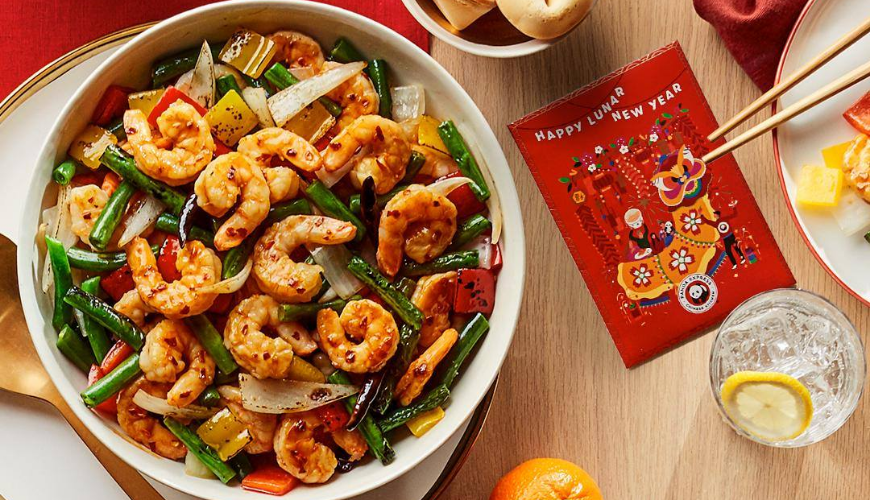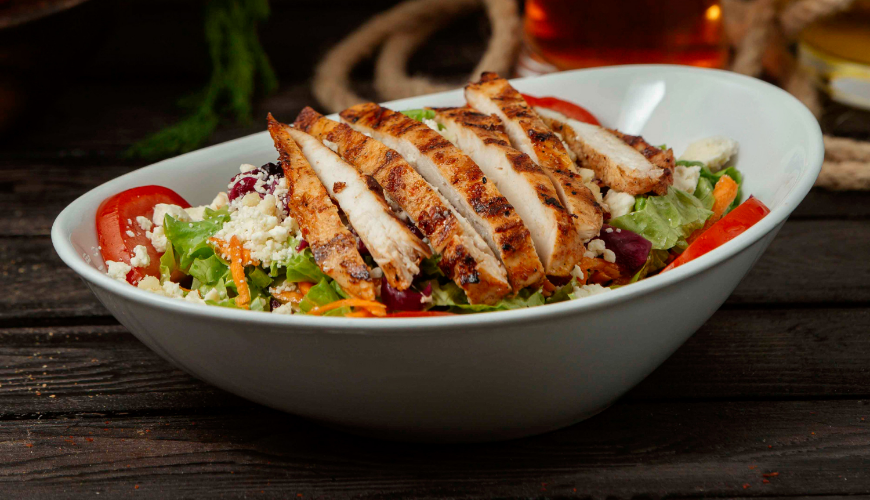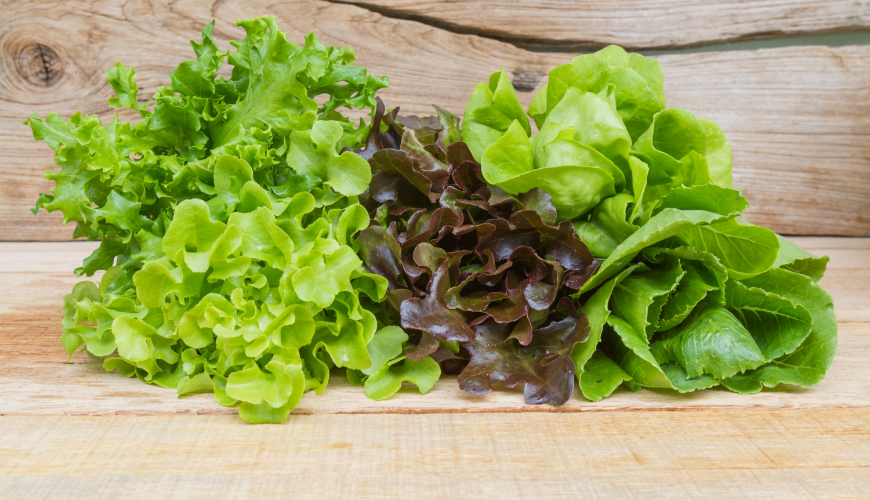Despite their modest dimensions, eggs hold immense capability to become the star of breakfast, add a spark to a cobb salad in lunchtime, and crown dinner’s burger. Although commonly praised for their satisfying quality and loaded protein content, do we genuinely comprehend an egg’s exact amount of protein?
Related: High Protein Food Comparison: Chicken, Steak, Beans, Fish
What is the protein content of an egg?
Though normally 6 grams of protein are considered to be in a typical egg, this isn’t always accurate. The general reference to six grams as being present in an average-sized egg could vary based on the individual size of each one.
Regardless of its dimension, every individual egg consists of approximately125 milligrams per gram protein which equates roughly to making up almost13% pure total protein per egg.
No matter your preferred cooking method – whether it’s chosen to be poached, made into an omelet, scrambled, fried or even hard-boiled each large peaking will furnish you with around 6.3grams worth proteins.Poached,Omelet, Scrambled, Fried and Hard-boiled.
Where can egg protein be found?
Egg whites are often heralded as the primary source of protein in eggs, yet they aren’t the sole component that provides this nutrient. Remarkably, yolks too have a considerable amount of protein content.
Consider an extra-large egg possessing a total 7 grams of protein; its yolk and white would present their protein contents somewhat like so:
In conclusion: to fully attain all the benefits derived from the total protien conent in one egg, you must consume both parts – yolk and white. By eating just one egg white, your intake is reduced to merely 4 grams out of the possible whole 7 grams available from an entire extra-large egg.
What are the advantages of eating only egg whites, given that egg yolks also have proteins?
Though it’s true that egg yolks and whites almost share an equal protein content, it’s the low-calorie factor of the egg white that outshines.
The major portion of fat in an egg is located within its yolk. Since every gram of fat consists more calories (9 calories per gram) compared to protein (4 calories per gram), naturally whites from eggs bear fewer total calories than their yolk equivalents.
An extra-large-sized white and yolk of an egg carry 19 and 61 total calories respectively.
If you’re planning a diet aiming at reducing your overall calorie intake, substituting whole eggs with just their whites could be beneficial.
In terms to daily Protein consumption; consider this – for getting roughly between 7-8 grams of protein, one might choose to either consume two pieces of Egg Whites totaling around 38 Calories providing about eight grams proteins or one entire uncut simple Egg bringing approximately seven Grams Proteins with a grand sum up-till mark eighty Calories in all. So evidently, choosing only Whites over entire Eggs can simply offer much higher Protein enrichment alongside lesser assumed Caloric figures by more than half worldwide!
Is egg considered a lean protein source?
The FDA classifies foods as good lean protein sources if they have “less than 10 grams total fat, less than 4.5 grams of saturated fat, and under 95 milligrams cholesterol” for each serving.
A serving size for an egg is pegged at 55 grams, equivalent to an extra-large egg.
An entire oversized egg holds roughly 5.3 grams of fat, about 1.8 grams of saturated fat, plus 208 milligrams of cholesterol. While it satisfies the requirements regarding fats, due to its high cholesterol content eggs don’t neccessarily conform to the FDA’s criteria for lean protein.
However, this doesn’t automatically disqualify the nutritional worthiness or classification of eggs as lean proteins. The yolk holds nearly all the detected cholesterol and fat inside an egg – along with other beneficial nutrients such as vitamins and minerals – while the whites contain almost no fats and are predominantly made up entirely from proteins.
Given their zero-cholesterol content, it can be said that egg whites serve as excellent sources of lean proteins.
What Makes Egg Protein Consumption Beneficial?
Ingesting foods high in protein aids in enhancing your metabolic process, elongating satisfaction after eating and sustaining muscle mass to aid in fat burning, as per a Journal of the American College of Nutrition review.
Researchers both from University of Connecticut and University of Missouri-Columbia, discovered that trial subjects who consumed a high-protein breakfast with eggs experienced lower hunger levels and ate less for their subsequent meal compared to those who consumed an equally calorific, but low-protein and high-carbohydrate meal.
Which foods contain more protein than an egg?
While eggs are a highly flexible source of protein aiding in muscle growth and fat reduction, they’re not the only ones. Indeed, numerous lesser-known (and some surprisingly) nutritional powerhouses have even higher protein content than an egg.
The following 26 high-protein foods in their individual serving sizes boast more protein than a single egg.
Hemp Hearts
Amount of Protein in 2 tablespoons: Roughly 6.3 grams
When you compare hemp hearts to the perhaps more renowned chia seeds, these little gems contain fewer calories and are packed with a higher protein content for every tablespoon taken. Each heart is abundant with alpha-linoleic acid, which is an essential omega-3 and supportive of cardiovascular health. Research implies that ingestion of hemp seeds can help combat diseases like cardiac ailments, obesity as well as metabolic syndrome; this could presumably be due to their high fiber content and abundance in omega-3s. You have the option to consume them directly from the packet or maybe sprinkle a bit into your salad, morning oats or even your post-exercise shake for added nutrient value. Hunt these down at your neighborhood health food outlet or go digital by getting a packet online through Manitoba Harvest’s e-store.
Edamame Beans
Protein content for each half cup: Approximately 6.6 grams.
Generally, these delicious steam-cooked soybeans serve as an extremely handy healthy munchie that you can conveniently pack into your workout bag. This is because they are reckoned among the rare non-meat sources of comprehensive protein — meaning they supply every essential amino acid in particular the branched chain variety which aids in muscle formation and growth.
Not to mention, edamame beans are also rich in magnesium; a mineral vital for energy manufacture, carbohydrate metabolic processes, and development of muscles with minimal fatty content.
For even more nutrient value per serving intake opt for some tempeh – an Indonesian delicacy made out of fermented soybeans offers a colossal amount of approximately 21 grams worth protein per serving size measuring half a cup.
Mung Beans
Protein, for every ½ cup (cooked): 7 grams
Widely enjoyed in Asia, mung beans have a delicate texture and present a sweet and nutty flavor. Apart from the astounding protein content of about 24 percent per gram, these beans are also rich in potassium, iron, and fiber which could pique your interest. Also worth noting is that unlike most legumes, mung beans preserve most of their vitamin C content even after boiling – an added advantage to consider incorporating into your diet. Adding boiled mung beans to salads can help enhance the taste without adding extra calories or sodium.
Chickpeas
Protein, per ½ cup (cooked): 7.3 grams
These mini tan spheres are a top-notch pick for losing weight. Loaded with valuable nutrients and belly-shielding, anti-swelling soluble fibers, chickpeas act as a tummy-flattening tool and can magnify feelings of fullness by releasing an appetite-reducing hormone known as cholecystokinin. Avoid getting trapped in the monotony of hummus; explore these novel ways to utilize chickpeas to keep shedding those extra pounds.
Chickpea Nutrition Facts and Health Benefits
Mozzarella & Cheddar
Amount of Protein, for every 1 oz: Mozzarella delivers 6.3 grams; Cheddar provides 6.5 grams.
These fundamental cheeses are amongst the reasons why myriad pizza-obsessed Americans fulfill their daily need for protein. Cheeses are not just an excellent source of satiety-inducing proteins but are also populated with healthful fats, calcium, and vitamin D to aid bone upkeep in later years.
Black Beans
Protein (for every 1/2 cup cooked): 7.3 grams
Black beans are more than just heart-healthy legumes – they’re also brain food. Packed with anthocyanins, these antioxidants shield cells against harmful free radicals and contribute to enhanced mental capability. Adding a half-cup serving provides an equal amount of soluble and insoluble fiber.
They can be used in hot breakfast wraps or crushed into a dip similar to hummus for added versatility. Not only do black beans offer resistant starch, but they’re also one of the most nutritious pulse types available.
Kidney Beans
Amount of Protein in each half-cup (cooked): 7.6 grams
While beans are often recognized as a good source of fiber, the enormous contribution of kidney beans may not be widely understood. The notable red variants provide an impressive 14 grams- surpassing three portions of oatmeal! Because their unique resistant starch fibers take more time to break down, these legumes work similarly to an efficient blood sugar control agent. This makes them a considerably “low glycemic” carb that aids in avoiding blood glucose surges. A recent research discovered that when diabetics included one cup of beans in their daily diet for three months, they noticed better enhancements in fasting blood sugar levels, cholesterol and even body weight compared to those who consumed equal volumes of fiber-rich whole wheat products.
Peanut Butter & Peanuts
Protein, per ounce (peanuts): 7 grams
Protein, per two tablespoons (peanut butter): 8 grams
Selecting the appropriate type and adding a double-tablespoon serving of peanut butter to your mixed fruit drink, a portion of whole-grain toast, or even cold noodles not only makes for a delightful meal but also provides an excellent source of protein vital for muscle formation along with healthful fats. Regular intake of peanuts contributes to preventing both cardiovascular and coronary artery diseases which are amongst the prevalent heart-related ailments as substantiated by research in ‘The American Journal of Clinical Nutrition’.
Quinoa
Protein content per 1 cup: 8 grams
The ancient grain from South America, Quinoa, stands out due to its unique property of being a “complete protein”. Unlike others in its category, this means it provides all essential amino acids. It exceptionally includes the muscle-benefitting L-arginine – an impressive characteristic for plant-derived sources. Even better, Quinoa is also rich in high amounts of heart-friendly unsaturated fats and serves as an excellent fiber source – a substance that promotes satiety or fullness after eating. To enjoy all these benefits from quinoa, consider experimenting with quinoa bowls or mix a portion with vegetables, beans or salad for a nutritious meal balance.
Gruyere Cheese
Protein content in 1 oz: 8 grams
Here is the reason you should enjoy an hour of wine and cheese indulgence: This exquisite Swiss cheese provides 30 percent more protein compared to a single egg, as well as a significant portion (one third) of your Recommended Dietary Allowance (RDA) for eye-shielding vitamin A. The subtly rich taste of this nutty cheese pairs effortlessly with cracker snacks, and it equally works splendidly to enhance the flavors in spinach quiches or a potato gratin.
Farro
Protein content: 8 grams per cup
Farro, an Italian staple grain, shares a flavor profile with brown rice but offers a more pleasant chewy texture and a distinct nutty undertone reminiscent of licorice. Toby Amidor, MS, RD notes that “farro is filled to the brim with antioxidant-rich vitamins A and E, along with vital minerals like magnesium and iron”.
Organic, Grass-Fed Milk
Protein per 8-oz cup: 8 grams
It’s common knowledge that milk is packed with protein. But did you know it is best to select organic milk? The farming practices for organic dairy don’t call for the use of inflammatory hormones and antibiotics that are often found in conventional milking methods. Moreover, grass-fed cows tend to have higher levels of omega-3s and contain between two to five times more conjugated linoleic acid (CLA), which contributes to lean muscle growth compared with those fed on grains and corn. Even though skim milk has fewer calories, many critical vitamins provided by milk are fat-soluble, implying you’re losing out on these benefits unless your selection includes at least a one percent fat content.
Sprouted Whole-Grain Breads
Protein for every two slices: 8 grams
It would be mistaken to assume all varieties of bread are nutrient-sparse white carbohydrates that can derail your weight loss objectives. This type of bread is high in essential nutrients and incorporates the brain safeguarding vitamin B (folate), along with healthful grains and seeds such as barley and millet. Additionally, because it has been sprouted, the grains, seeds, and legumes have undergone pre-digestion removing their anti-nutrients. This results in a highly digestible bread supercharged with an array of nutrients.
Lentils
Protein per half cup (cooked): 9 grams
These tiny, crescent-shaped pulses are jam-packed with fiber that accelerates fat reduction. In a study conducted in Spain, it was revealed that individuals who incorporated four weekly portions of legumes into their diets shed more weight and enhanced their cholesterol better than those who didn’t. Toss some green lentils onto your salad or replace chicken with red lentils in curry for some delicious alternatives.
Amaranth
Protein per cup of cooked amaranth, it contains roughly around: 9.4 grams
The nutrient-dense seed named Amaranth was a crucial part of the Incan menu. These seeds have a soft texture similar to grains (hence they are also referred to as pseudocereal) with a slight nutty flavor comparable to quinoa. On the nutritional front, very few grains can stack up against Amaranth when measured gram for gram.. Due to its higher fiber and protein content than wheat and regular brown rice, packed with abundant vitamins, coupled with its proven ability in aiding in reducing blood pressure levels as well as detrimental LDL cholesterol; makes this grain capable enough of challenging any competitor on the list! You could use amaranth in your granola bowls or make porridge out it just like oats; even preparing dishes similar way you cook rice is possible – perhaps sauteed alongside grilled vegetables served underneath chicken or maybe combined with almonds, apples & goat cheese which would work perfectly for an alluring salad dish catering towards waist slimming diet plans.
Teff
Protein for each cooked cup: 9.75 grams
Teff is hailed as the next big thing by Lisa Moskovitz, RD because it’s a more comprehensive source of protein packed with essential amino acids than quinoa. “This makes it perfect for people wanting to keep their calorie intake minimal while maximizing protein,” she asserts. But its advantages extend beyond that. It’s also notable as a solid fiber provider and contributes potentially up to 30 percent of your daily iron requirement that aids in blood circulation.” Greater amounts of fiber coupled with increased protein levels aid significantly in appetite management just like other grains, teff can be prepared into porridge or fashioned similar to risotto.
Kamut
Protein in each cooked cup: 9.8 grams
Kamut, an ancient grain, can replace quinoa for an added protein rise. It’s packed with minerals such as magnesium, potassium, and iron which are beneficial for boosting energy and preserving muscle health. Also, every serving yields about 21 grams of dietary fiber. Excitingly enough; a paper published by the European Journal of Clinical Nutrition discovered that consumption of kamut curtails cholesterol levels as well as blood sugar values while also reducing cytokines – compounds responsible for triggering body-wide inflammation.
Pumpkin Seeds
Protein content per 1 oz: 9 grams
Commonly referred to as pepitas, pumpkin seeds are packed with magnesium, phosphorus, and zinc that boost energy. These nutrients in pumpkin seeds contribute not only to your overall well-being but also promote radiant skin. The building of proteins needed for new tissue development and repairing any damaged tissue depends on the presence of zinc in our skin cells. Incorporate these nutrient-packed seeds into your diet by adding them to salads or rice dishes, alternatively you can consume them raw with cereal.
Spelt
Protein content in 1 cup: 10.7 grams
Spelt is another grain rich with protein that contributes to muscle growth. This grain is a cousin of wheat, but it carries higher amounts of fiber and naturally, more protein.
Beef Jerky
Protein per serving (1 oz): 9-12 grams
Gone are the days when beef jerky was synonymous with gas-station junk food. Simply take a look at some of these top-rated jerkies and you’ll understand what we mean. Due to its curing and dehydration process, beef jerky is one of the highest protein-packed foods available on a per gram basis. Thus, it serves as an excellent source of protein that fuels your metabolism and keeps hunger at bay post-workout or even as a healthy roadside snack.
When choosing a type of jerky, ensure that it has less than 400 mg sodium content and no more than 5 grams sugar per ounce serving. Furthermore, for added nutritive value, always prefer brands using grass-fed organic beef in their production.
2% Greek Yogurt
Protein content per 7 oz: 20 grams
Looking to shed pounds and develop lean muscle? Yogurt can be your figure’s best companion. Apart from the satisfying potential of its protein and fat content, yogurt is also a top source for probiotics that are beneficial to the gut. The Journal of Nutrition published a study citing probiotics, like those in yogurt, aided overweight women in losing almost double the weight compared to those who didn’t consume any probiotics. However, it’s important you make smart choices — avoid low-fat or non-fat options stripped of nutrients and filling capability. Also steer clear of flavored yogurts which may contain sugar nearly equivalent to a sweet dessert.
Fish
Protein for each serving of 3 ounces:
- 24 grams: Anchovies
- 22 grams: Tuna, Salmon, Halibut, Snapper
- 21 grams: Flounder, Sole, Sardines
- 20 grams: Shrimp & Cod
Fish are often praised mostly for their wealth in anti-inflammatory and cerebral protective omega-3 fatty acids as well as their capabilities to help manage weight. This puts them on the list of reliable low-calorie sources to incorporate protein into one’s food intake.
Chicken & Turkey
Protein amount in three ounces: turkey breast – 26 grams; chicken breast – 16 grams; chicken thigh – 9 grams.
Bird meat is superior to other animal-derived proteins due to its lower fat profile and absence of gut-damaging saturated fats. Affordable, simple to cook, and less fatty than numerous other meats, chicken blatantly stands out as a favorite choice. Spice up the usual grilled chicken by experimenting with inventive kitchen recipes!
Red Meat
Protein content per 3 ounces: Beef:19-31 grams; Pork:23-25 grams; Bacon(3 slices):8.6 grams.
Red meat is considered a classic protein provider along with eggs. It’s advisable to choose grass-fed beef over conventionally-fed ones when shopping as it has higher nutritional value.






